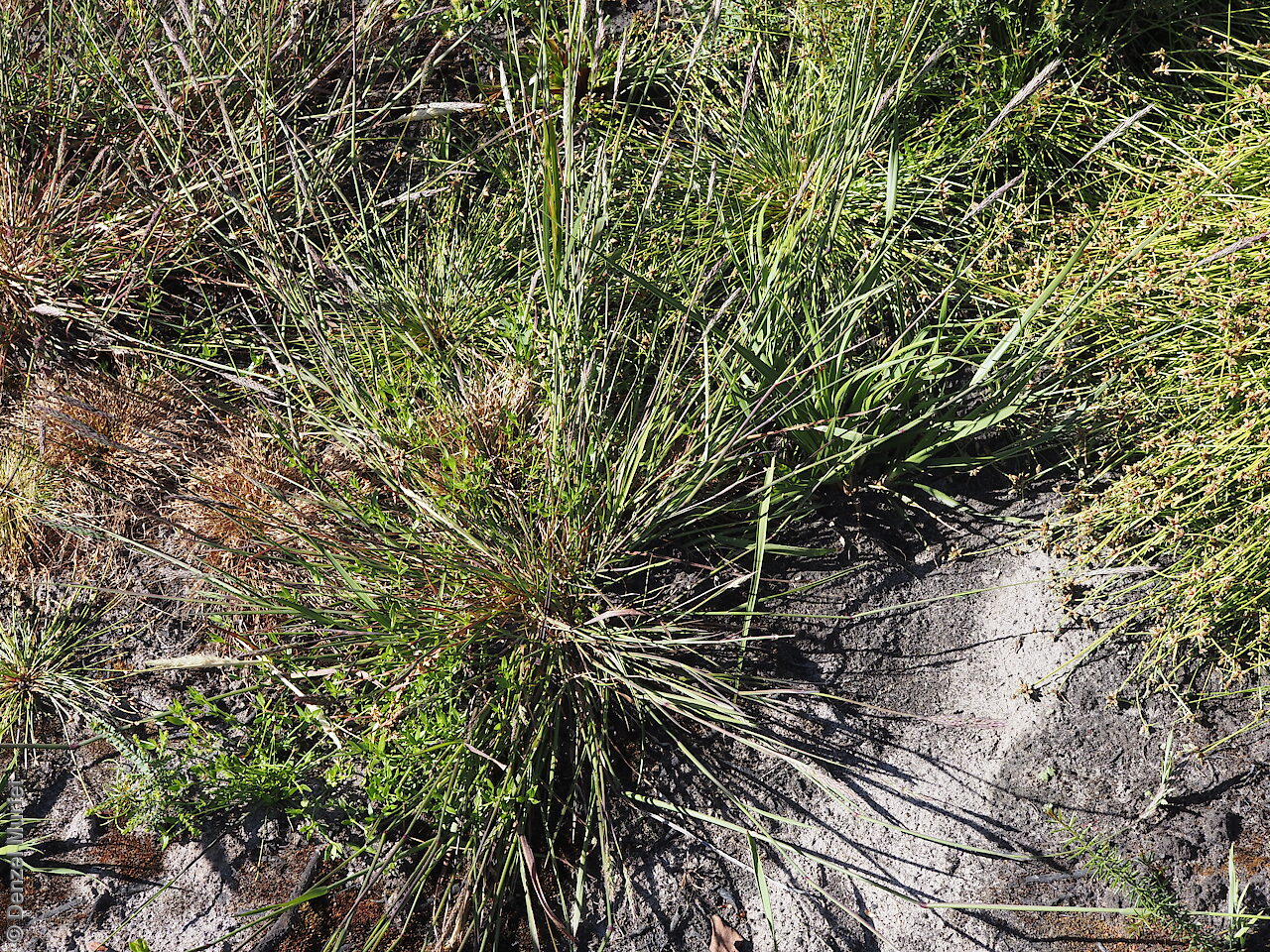
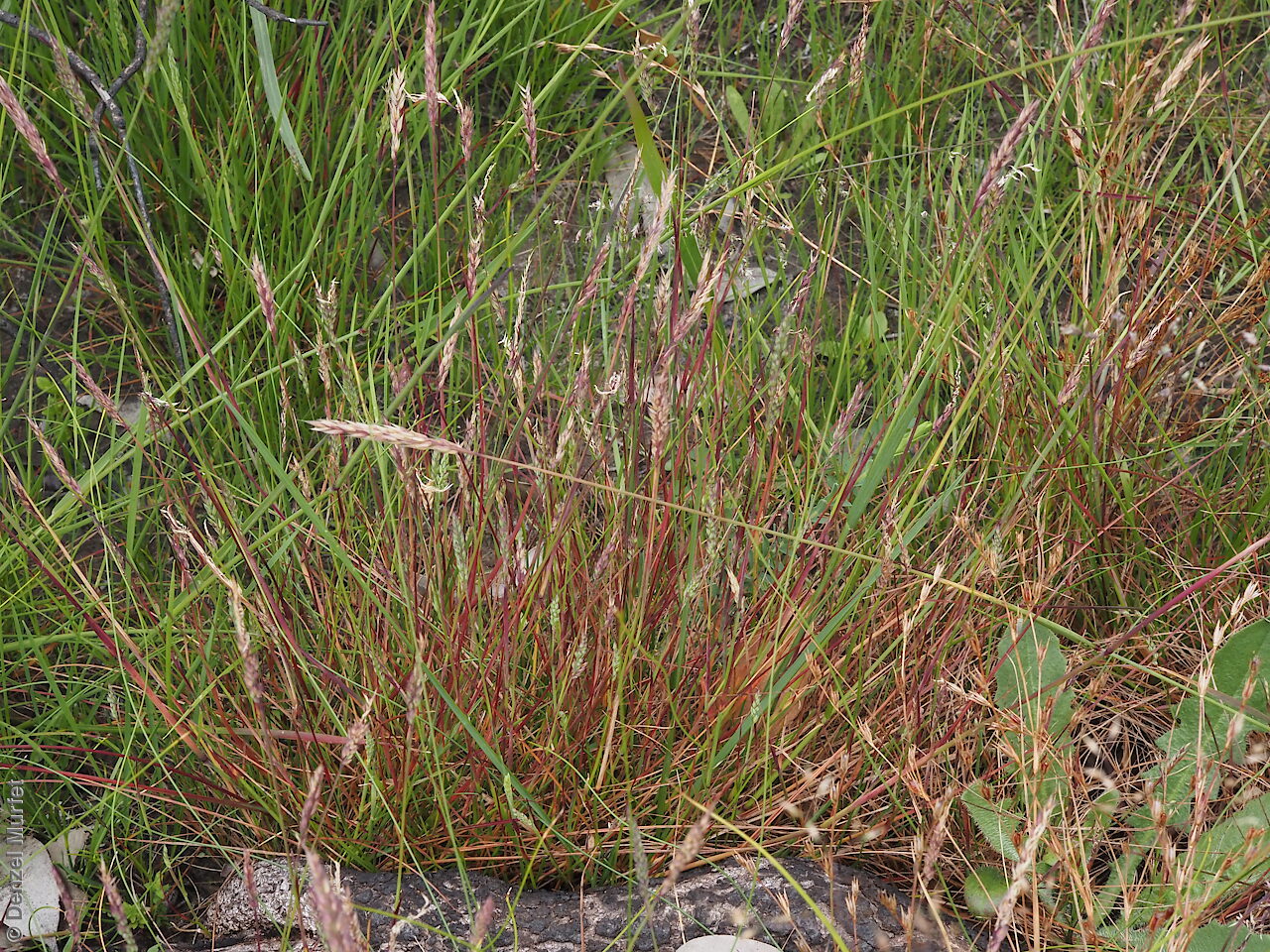
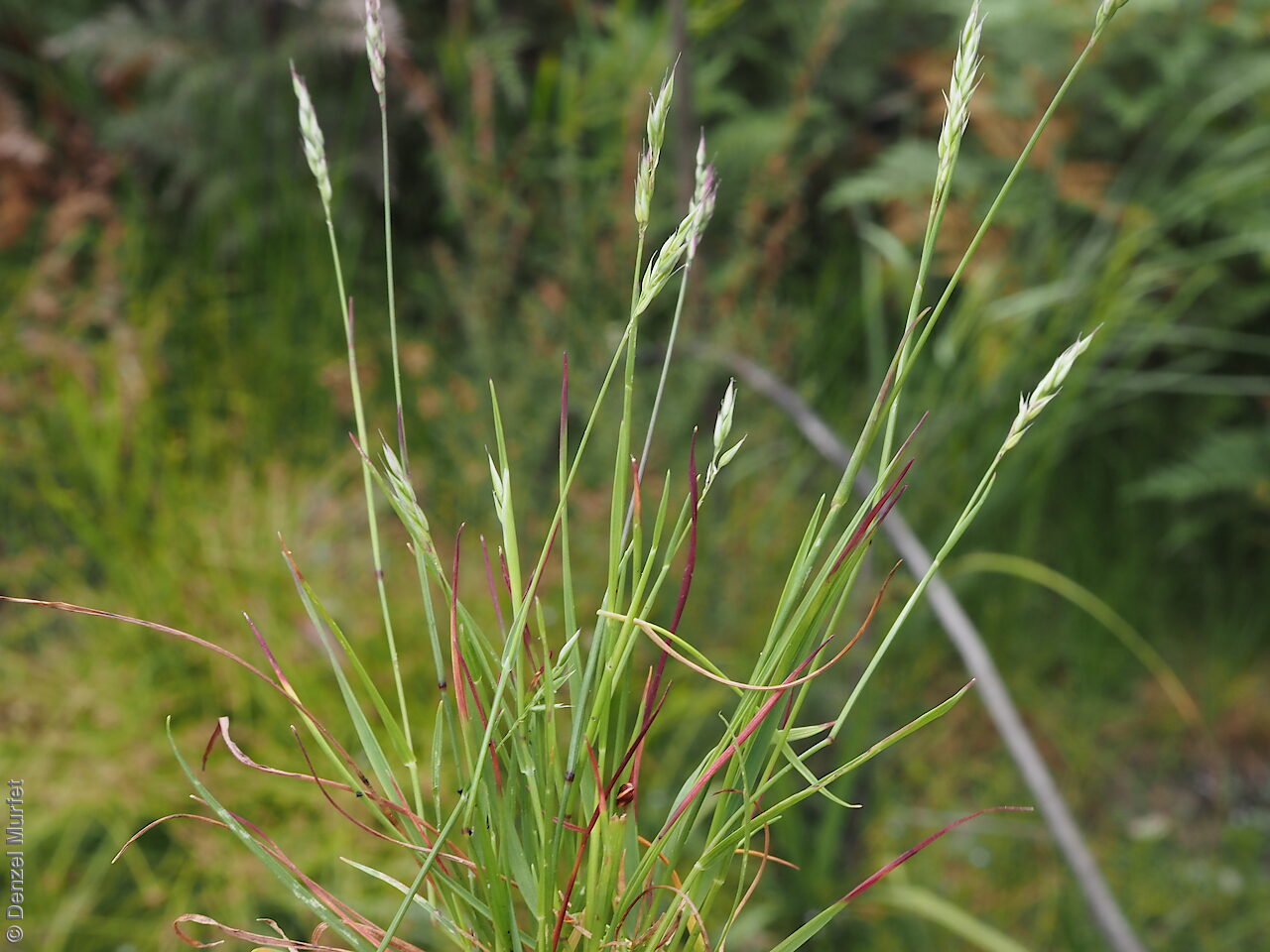
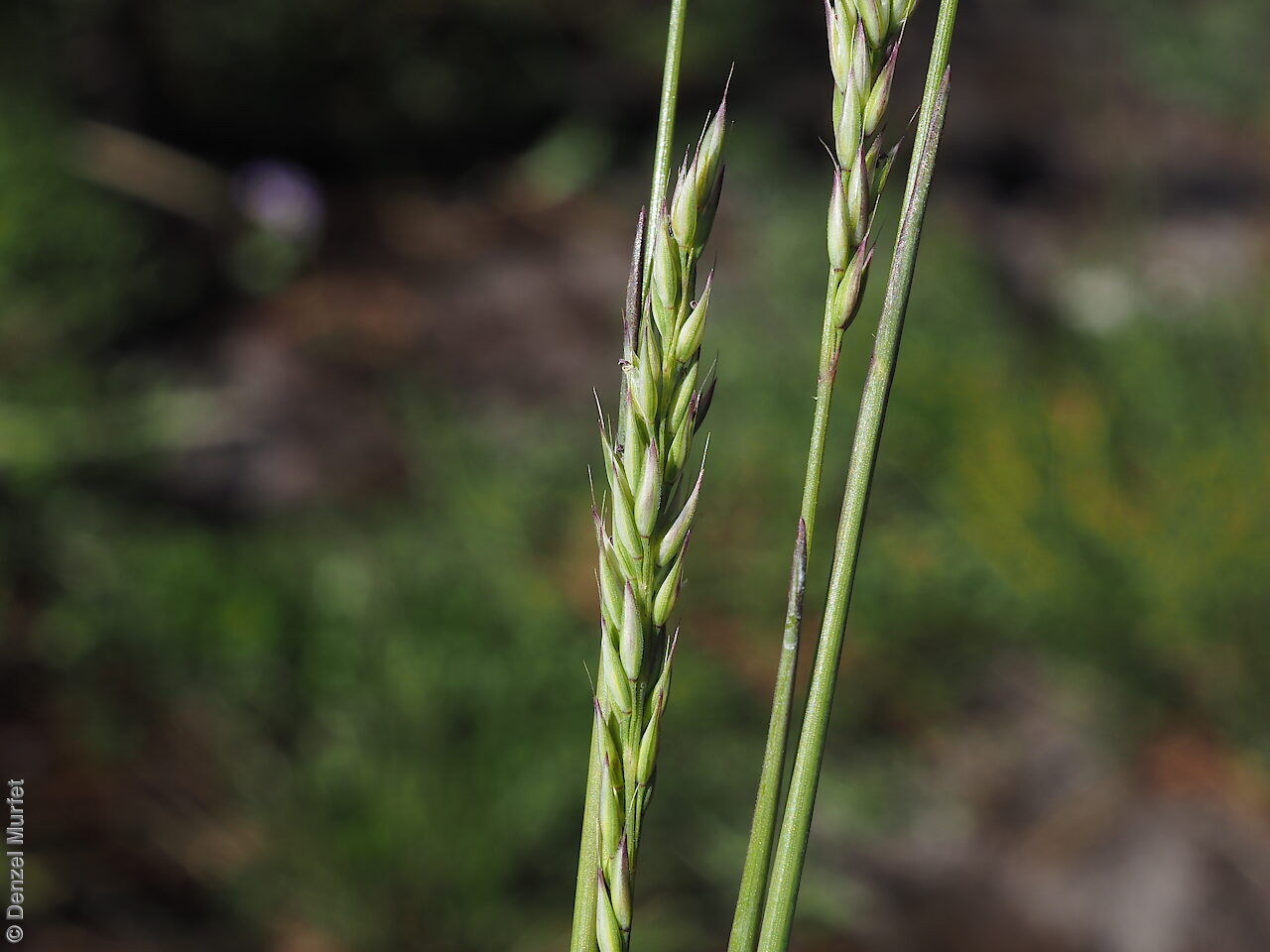
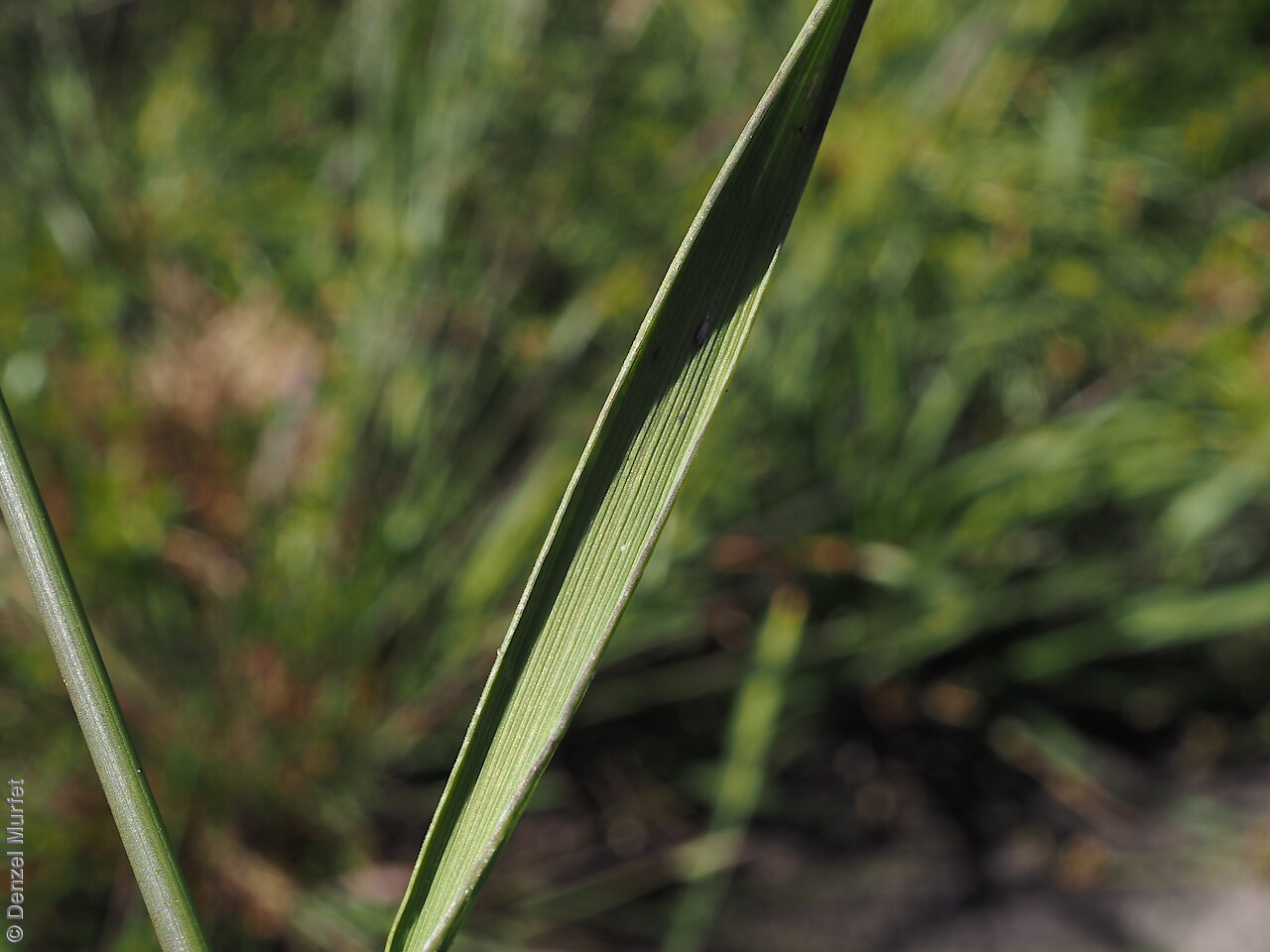
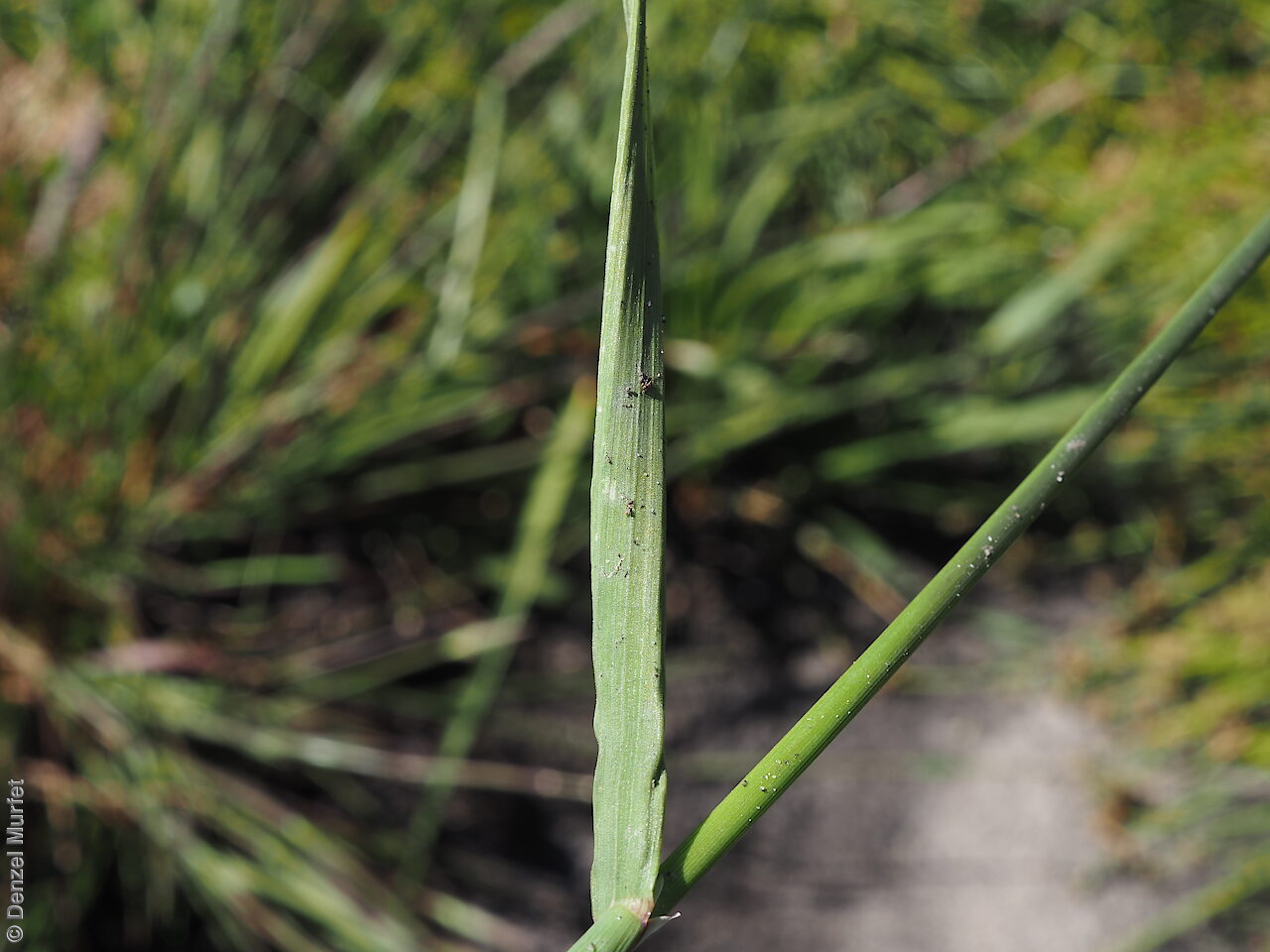
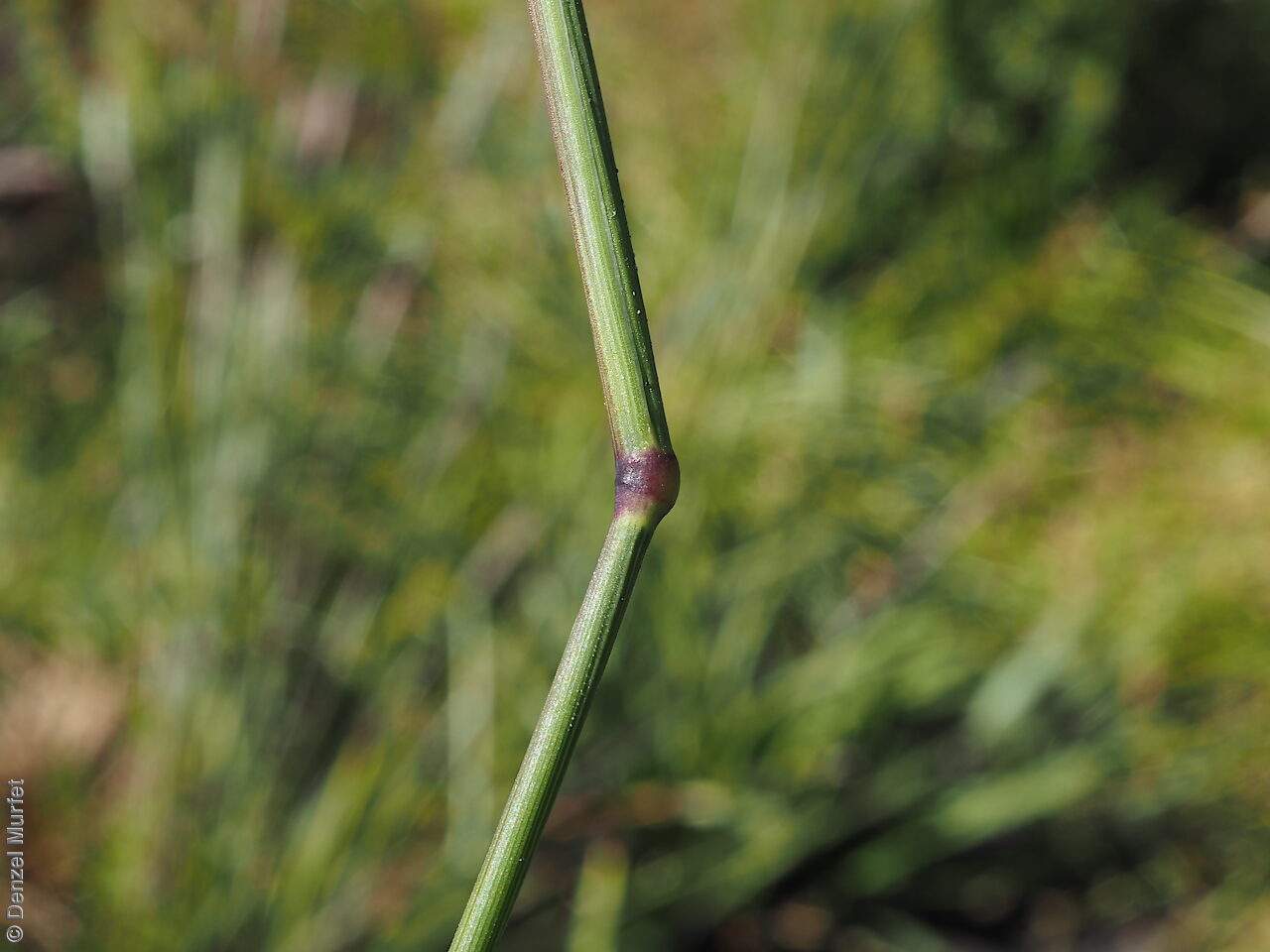
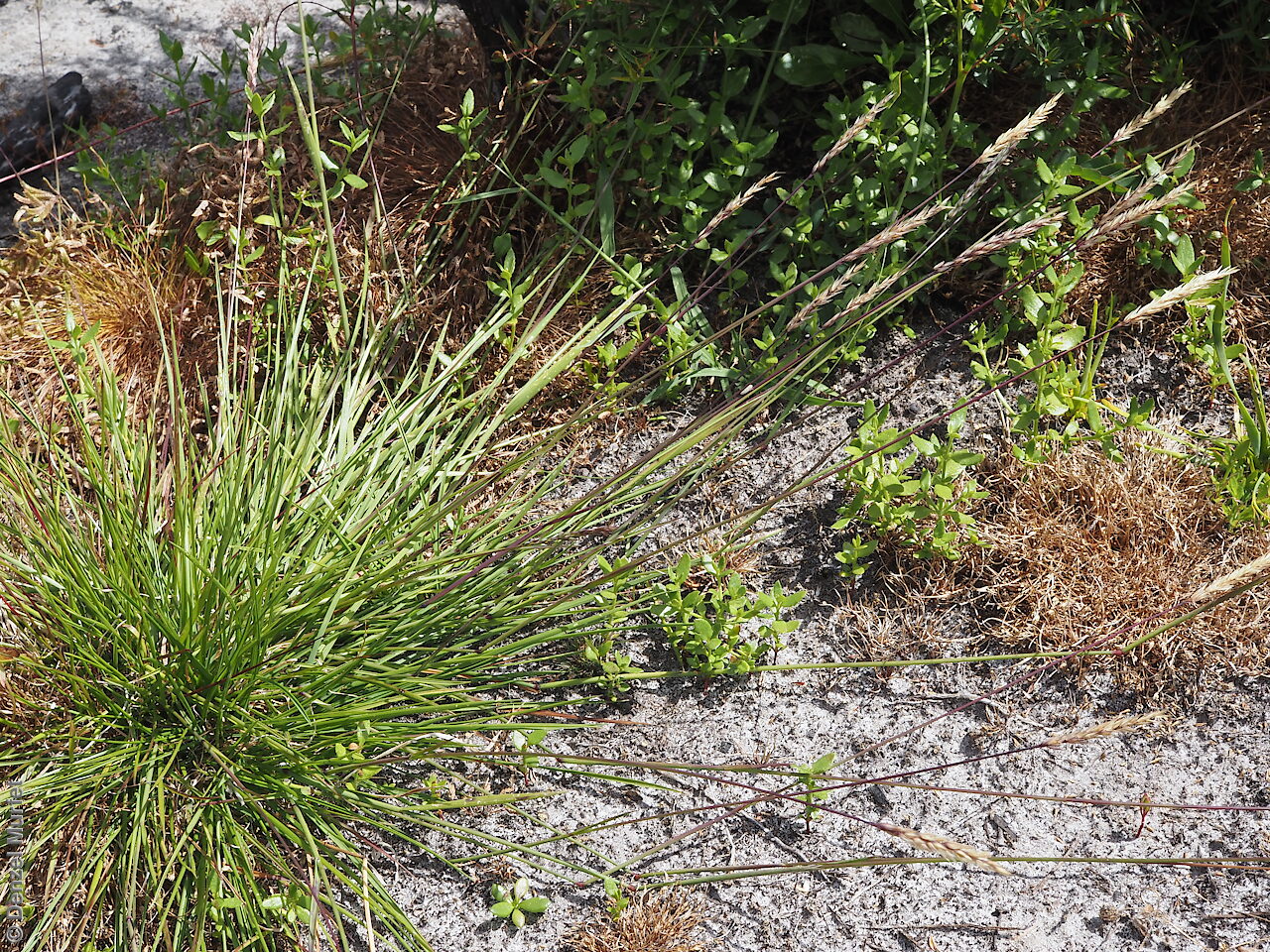
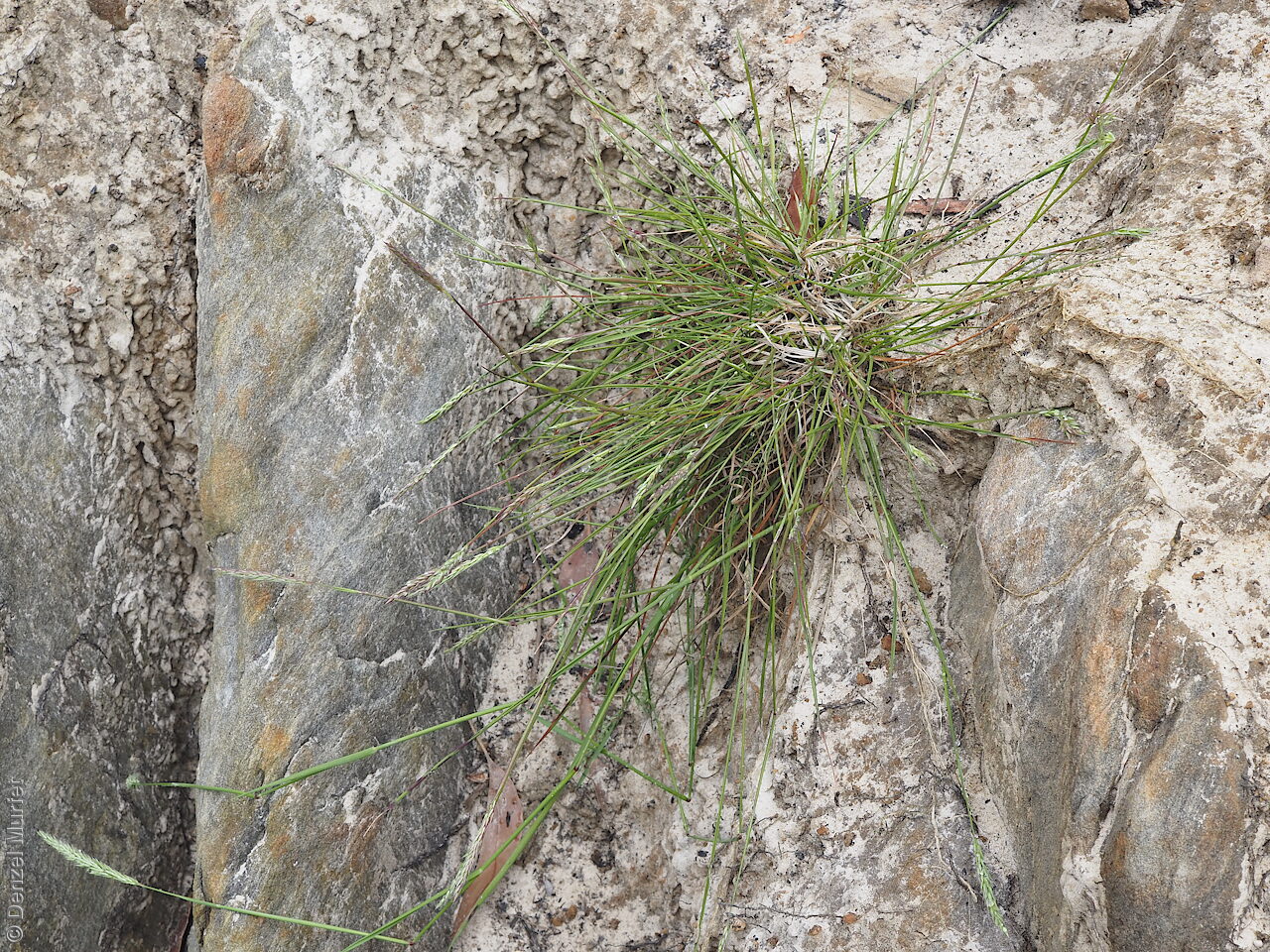
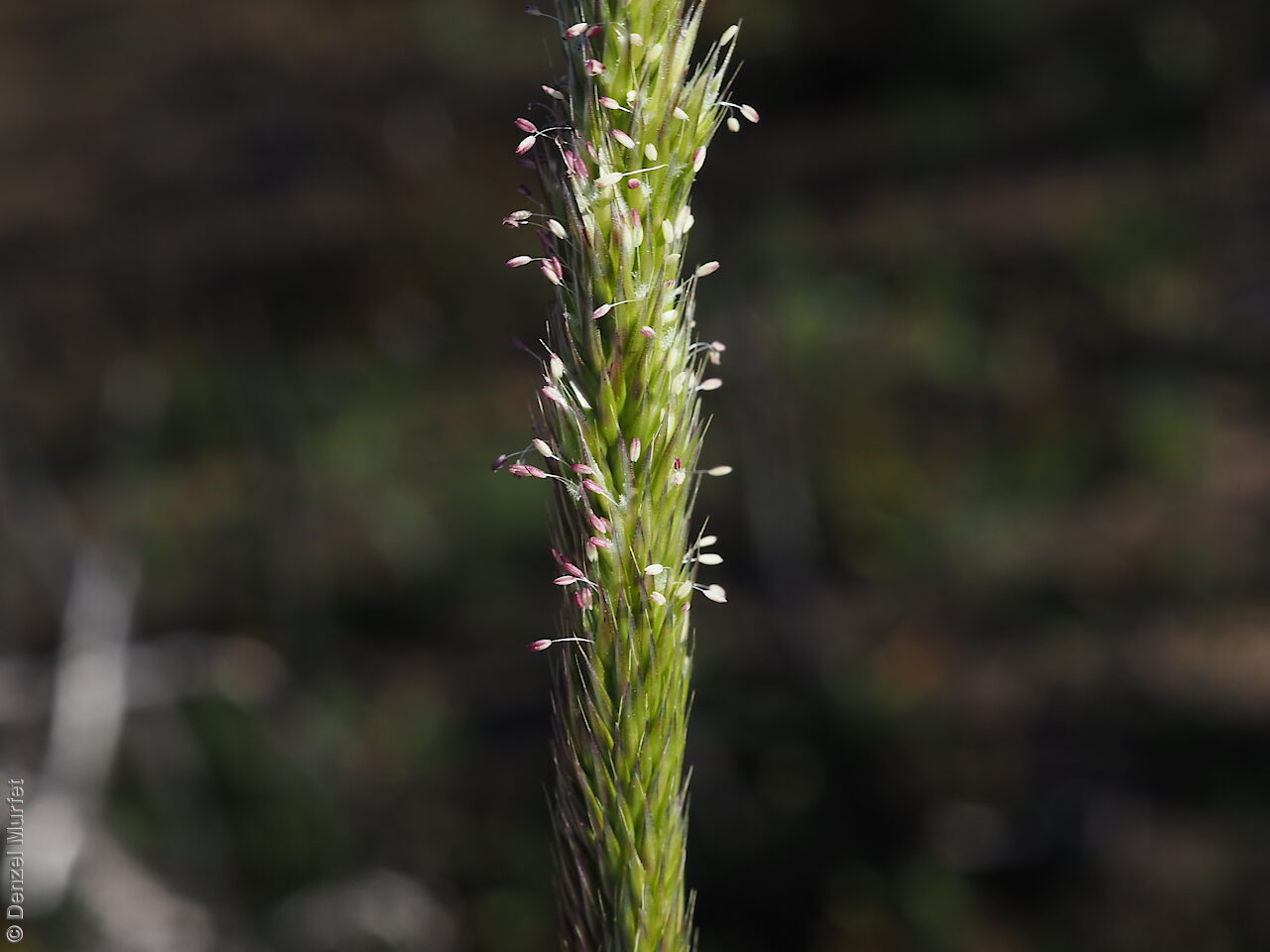
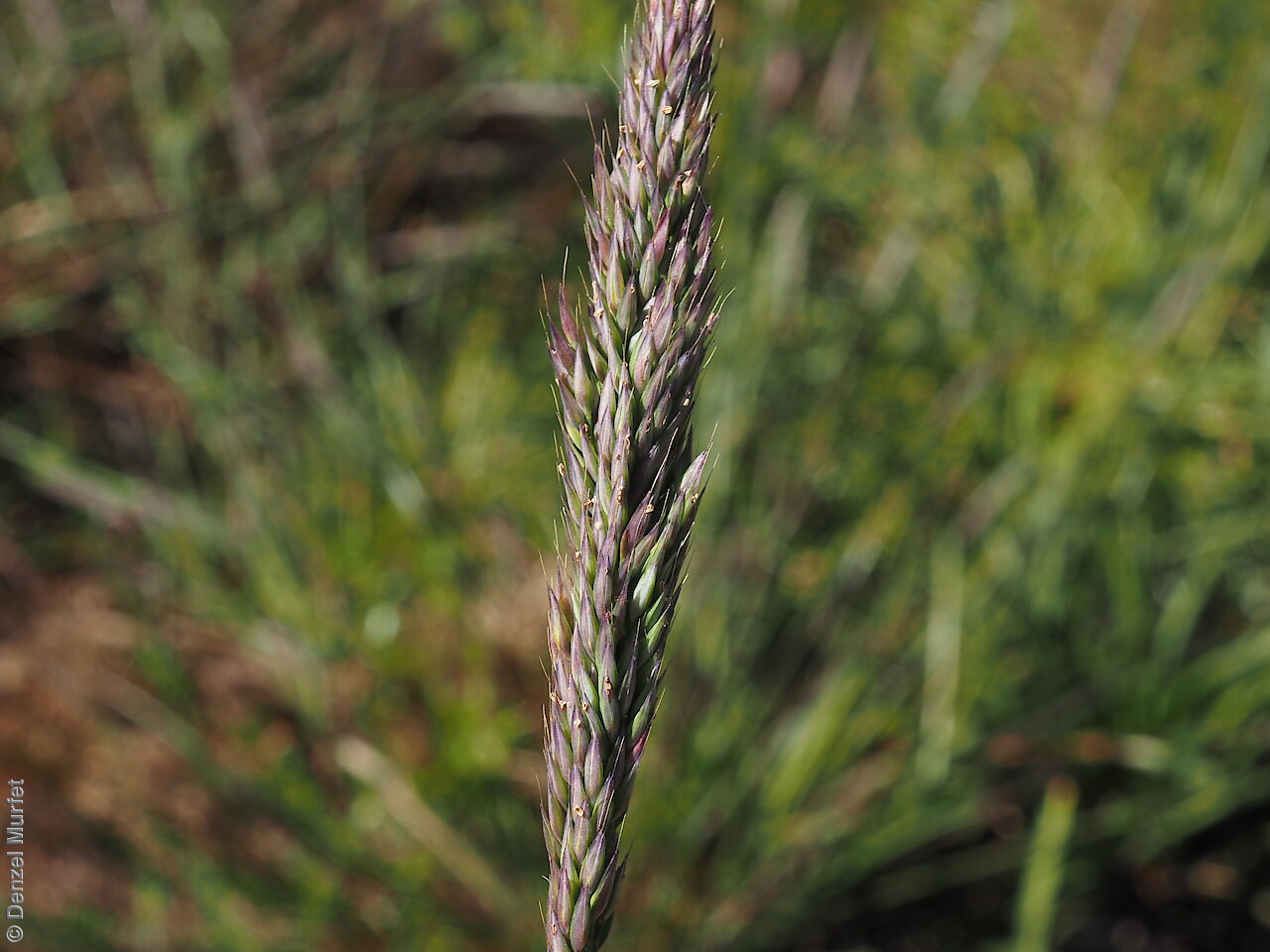
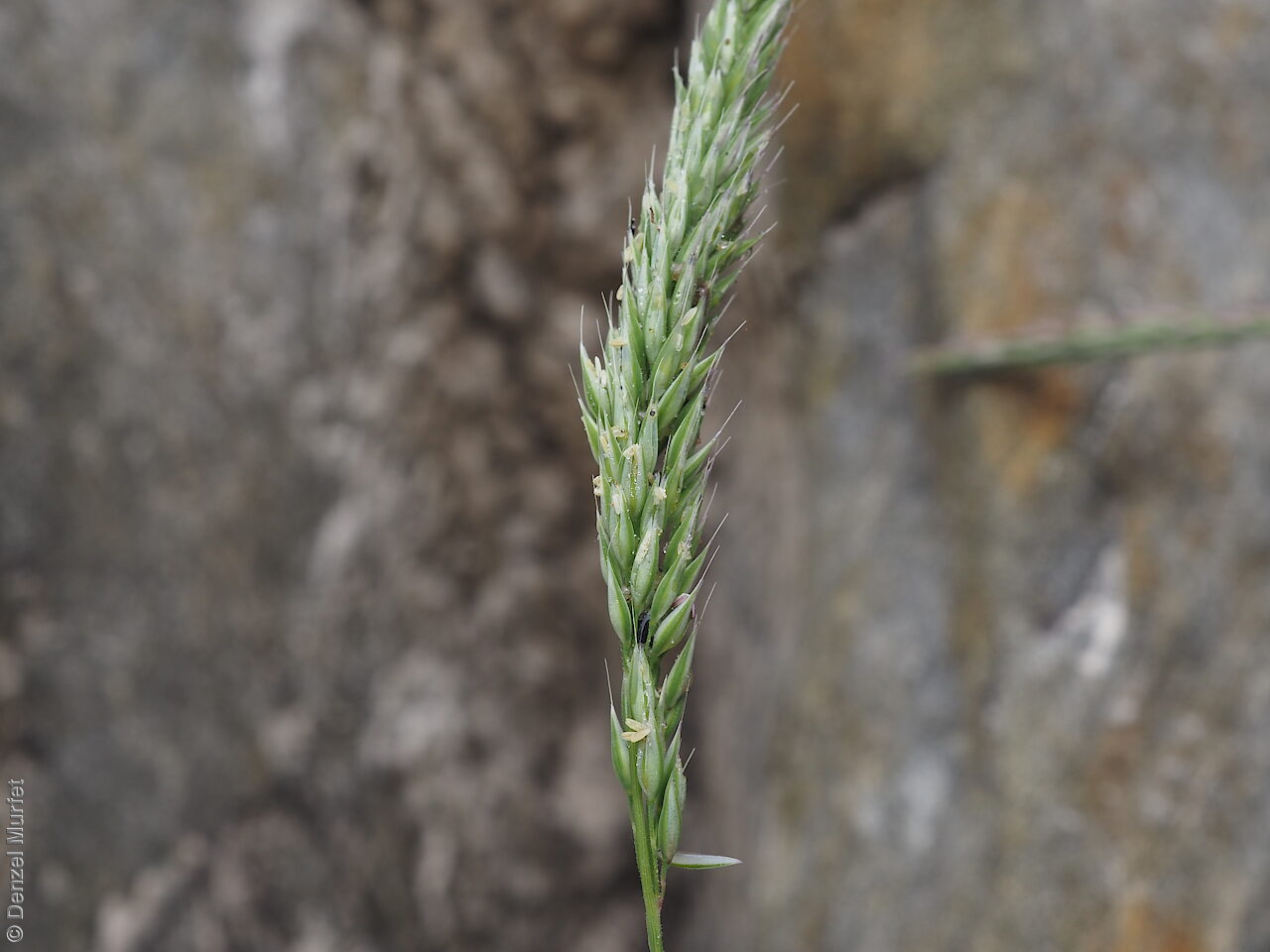
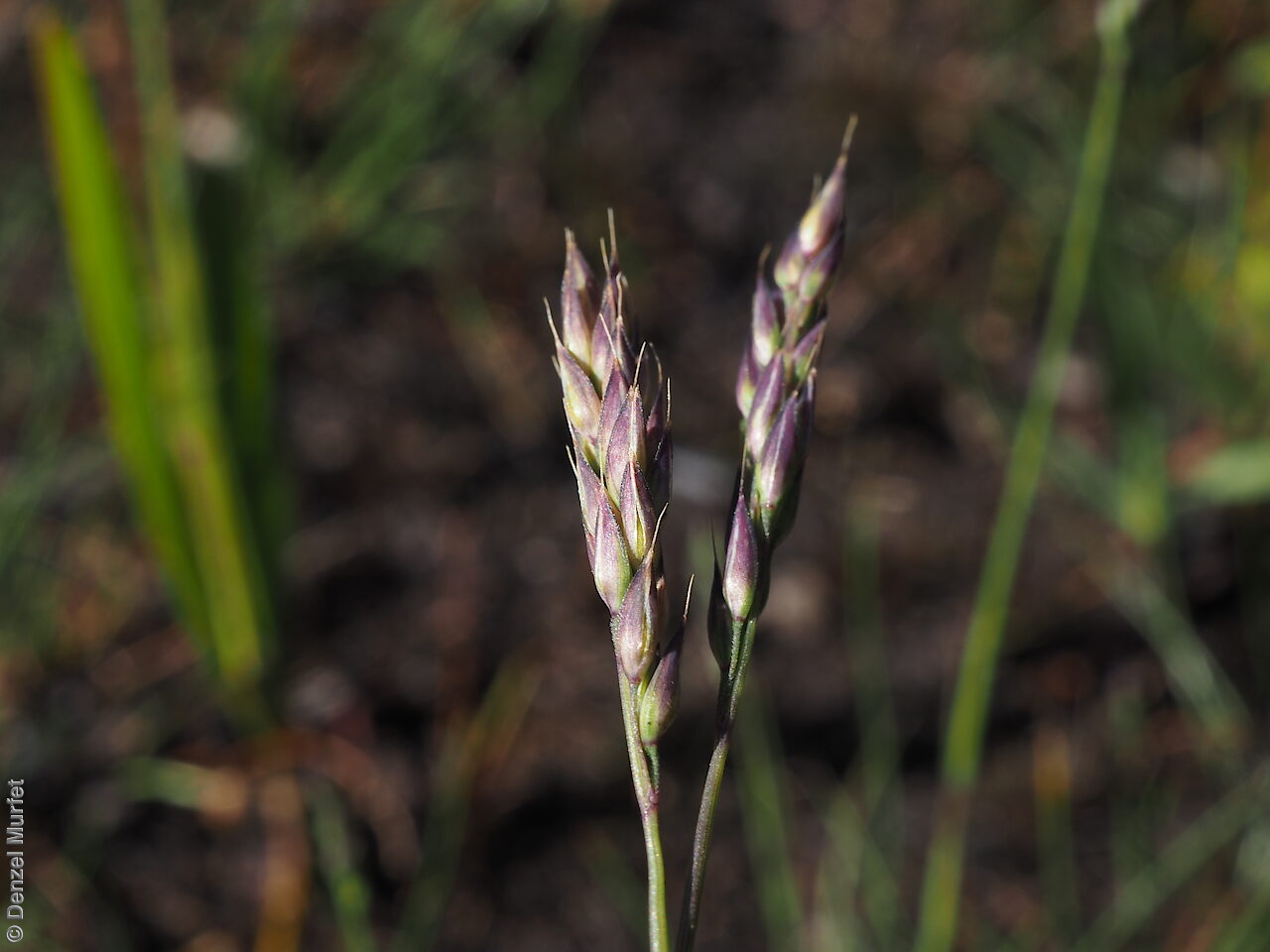
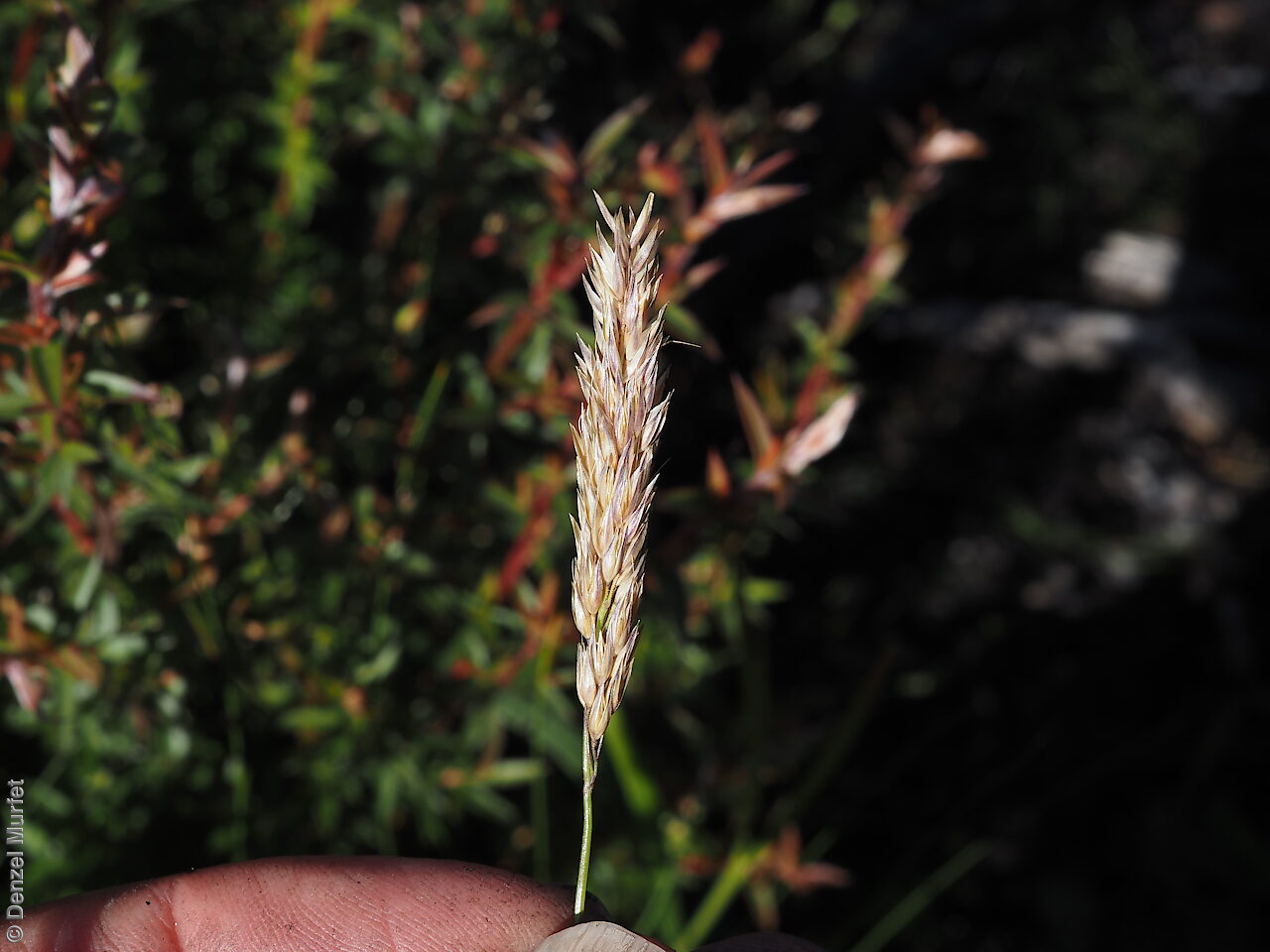
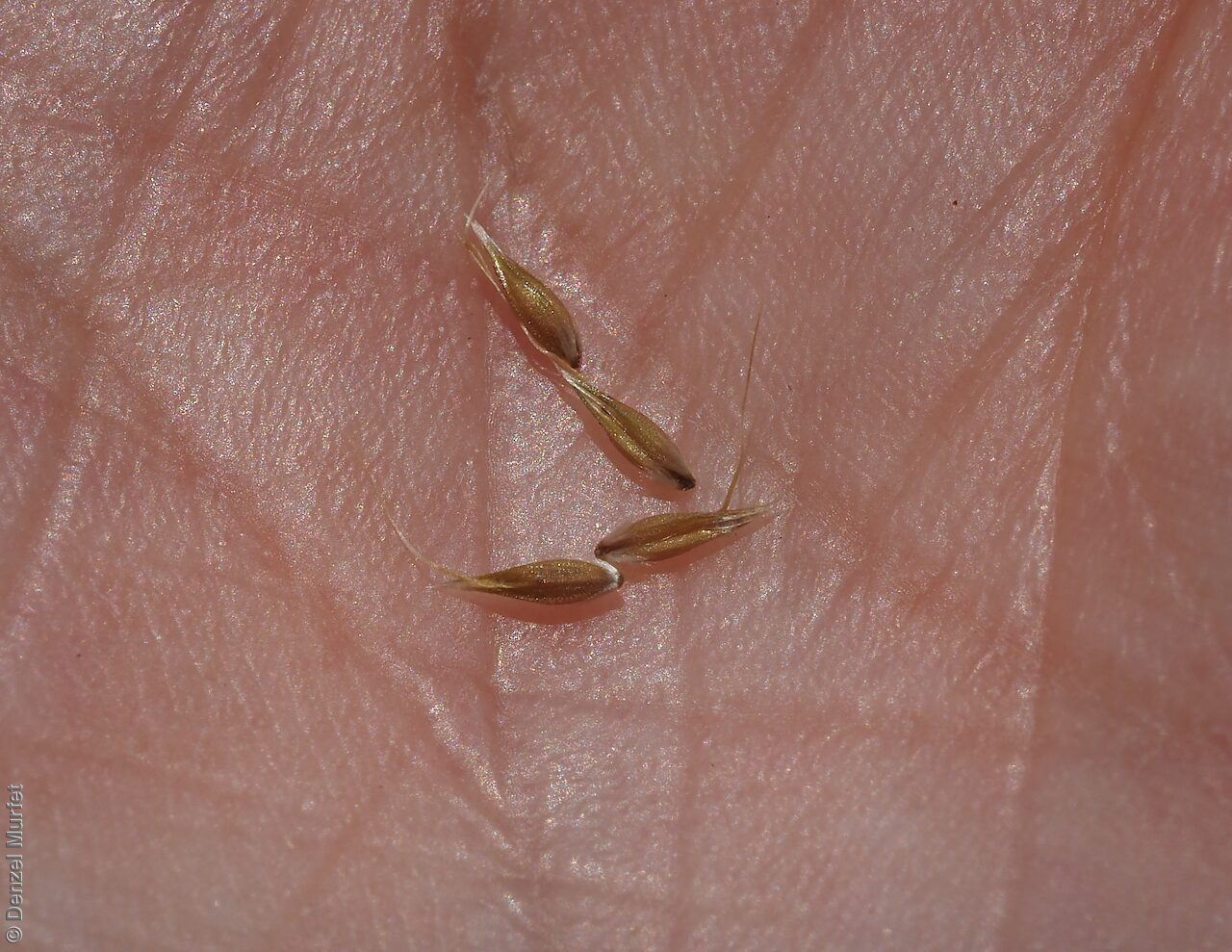
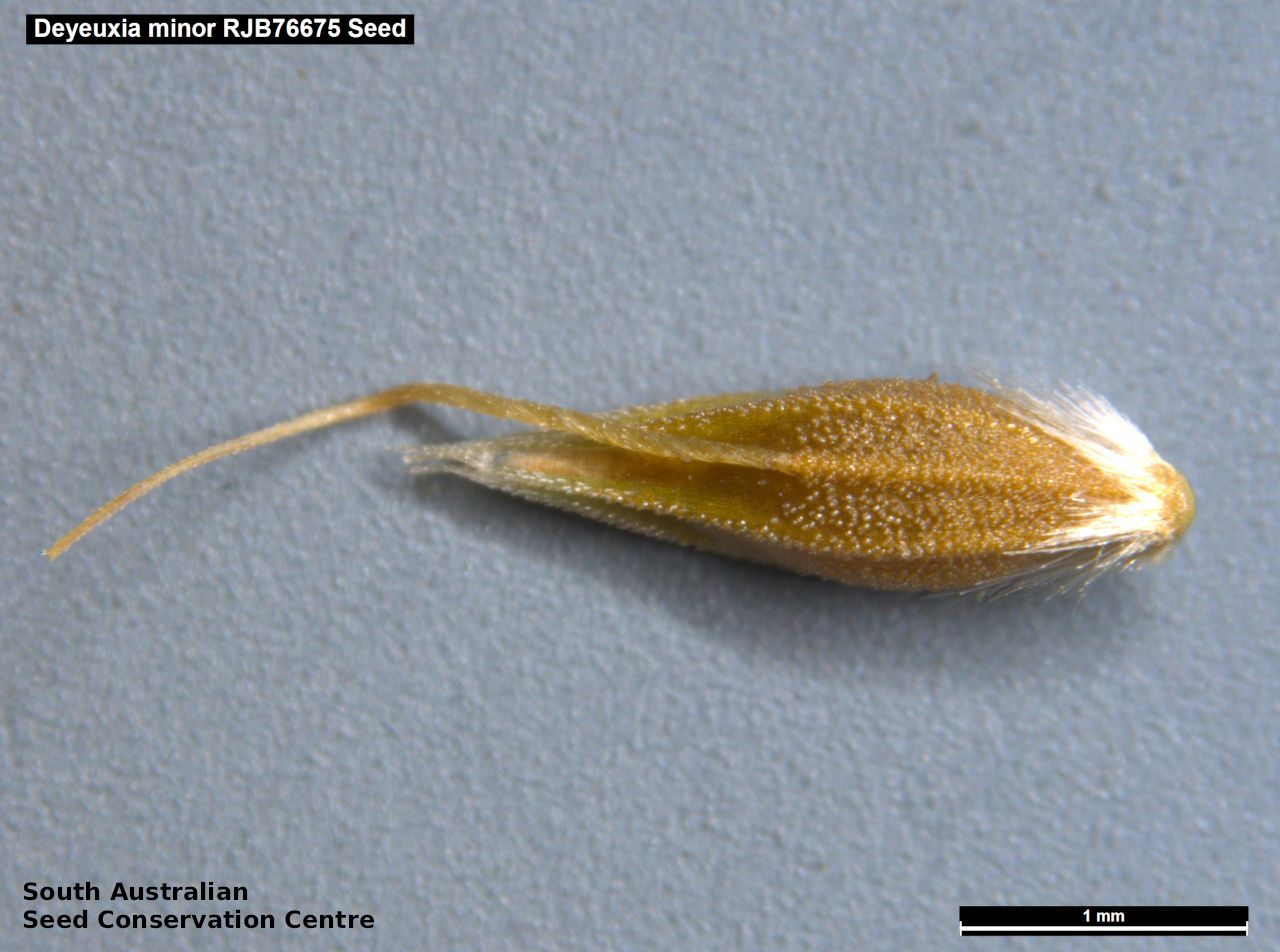
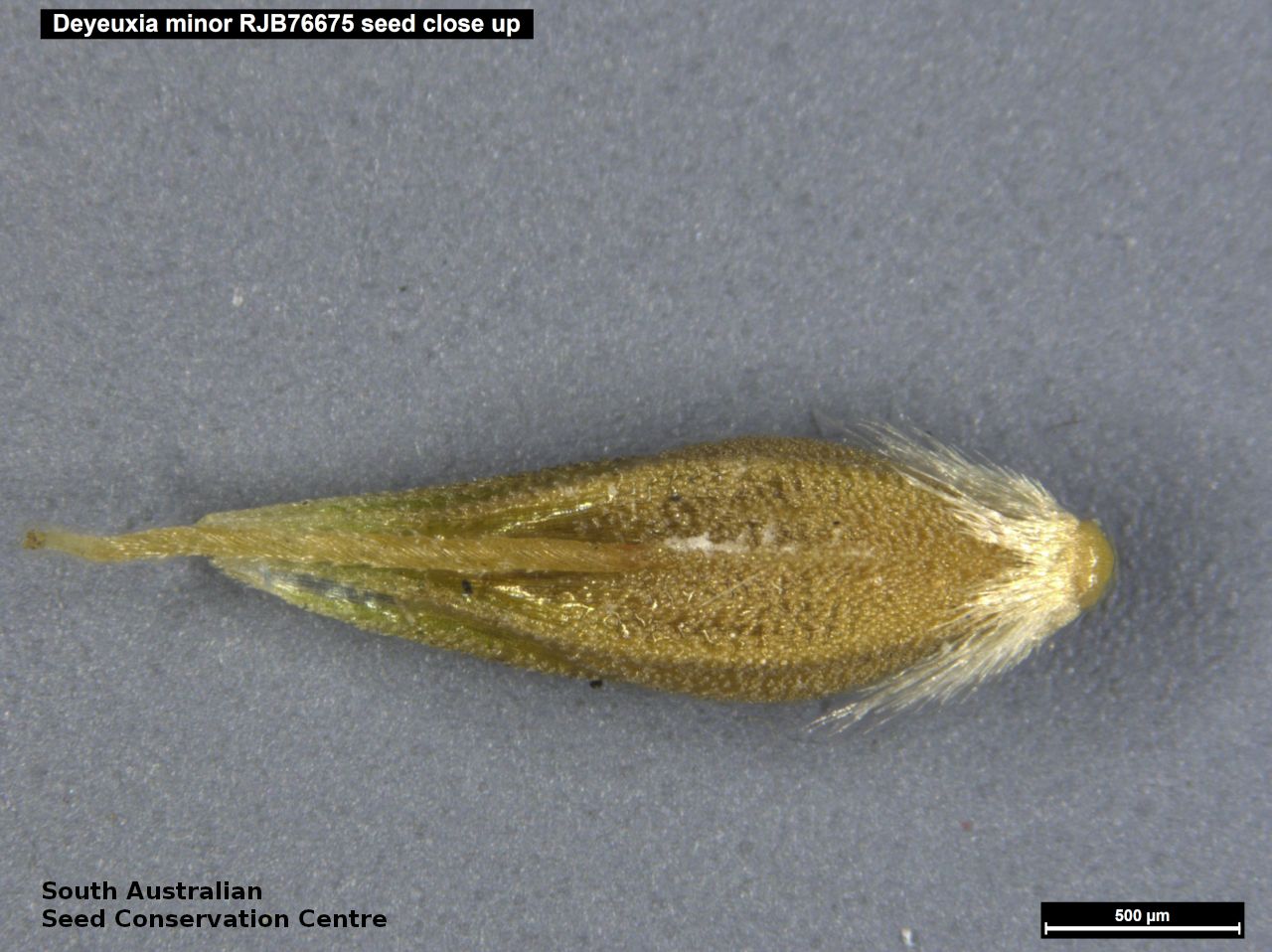
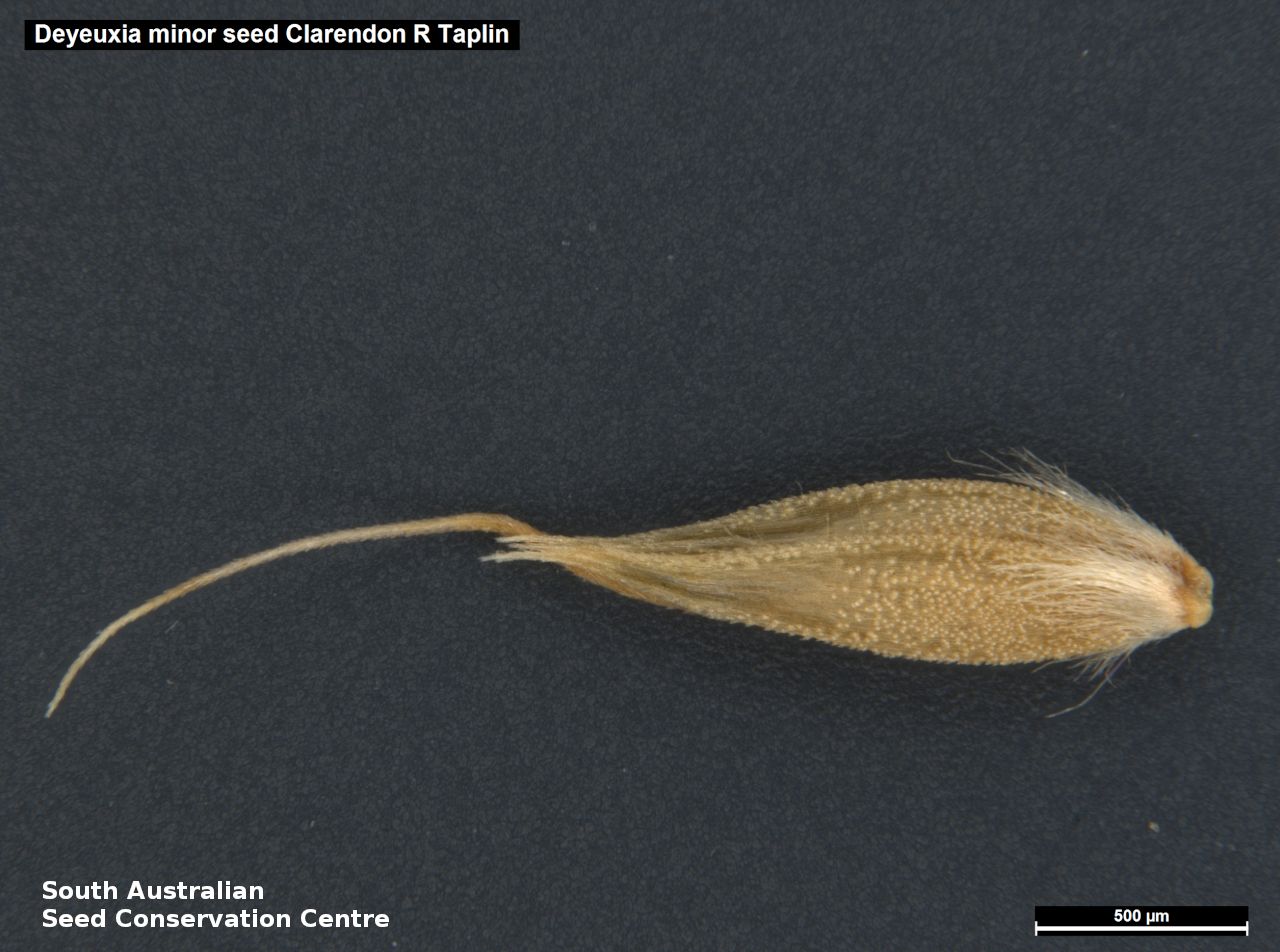


Prior names
Calamagrostis minor
Etymology
Deyeuxia named after Nicolas Deyeux (1753-1837), a Professor at the School of Pharmacy and Faculty of Medicine, Paris. Minor from Latin meaning small, referring to the species smaller habit.
Distribution and status
Found on Kangaroo Island, southern Mount Lofty Ranges and the lower-South-east growing in damp areas under light eucalypt cover or margins of wet sclerophyll forest. Also found in Victoria and Tasmania. Native. Rare in South Australia. Common in the other States.
Herbarium regions: Southern Lofty, Kangaroo Island, South Eastern, Green Adelaide
NRM regions: Adelaide and Mount Lofty Ranges, Kangaroo Island, South East
AVH map: SA distribution map (external link)
Plant description
Slender tufted, glabrous perennial grass; culms ascending or erect, to 50 cm high. Leaf-blades flat or folded, to 15 cm long and 2 mm wide; smooth or finely scabrous, often flaccid; ligules obtuse, mostly 1-2 mm long. Flower-spike a dense cylindrical panicle to 4 cm long. Spikelets to 3.5 mm long with plump, green or more often purplish glumes; equal, acute, strongly scabrous along the keel; lemma c. three-quarters as long as spikelet, rather strongly constricted above midpont; prominently 3-5-nerved, strongly scabrous below midway and along the nerves; shortly 4-toothed at apex; awned from about midway; awn as long as or longer than lemma, twisted in lower part; callus hairs to c. 0.8 mm long; rhachilla bristle not produced. Flowering between November and December. Fruits are pale brown compact long fruit-spike. Seeds are yellow-brown grain to 2 mm long and 0.5 mm wide. Seed embryo type is lateral.
Seed collection and propagation
Collect seeds between December and February. Use hands to gently strip seeds off the mature seed spike that are turning straw colour. Mature seeds will come off easily. Alternatively, you can break off the whole seed spike. Place the seeds/spike in a tray and leave to dry for two weeks. No further cleaning is required if only seed collected. If seed spikes collected, use hand to strip off the mature seeds. Store the seeds with a desiccant such as dried silica beads or dry rice, in an air tight container in a cool and dry place. Seed viability is usually high.
| Location | No. of seeds (weight grams) | Number of plants | Date collected | Collection number Collection location | Date stored | % Viability | Storage temperature |
|---|---|---|---|---|---|---|---|
| MSB | 1,900 (0.628 g) | 20 | 13-Jan-2007 | RJB70687 Southern Lofty | |||
| BGA | 19,000 (7.58 g) | 50 | 26-Dec-2007 | RJB76675 Southern Lofty | 19-Sep-2008 | 90% | +5°C, -18°C |
| BGA | 18,700 (7.25 g) | 14-Dec-2017 | RJB76675 Southern Lofty | 30-Jun-2018 | 100% | -18°C, -80°C | |
| BGA MSB | 1,800 (1.110 g) 1,300 (0.770 g) | 50 | 14-Jan-2021 | DJD3994 Kangaroo Island | 28-Jun-2021 | 90% | -18°C |
Number of plants: This is the number of plants from which the seeds were collected.
Collection location: The Herbarium of South Australia's region name.
% Viability: Percentage of filled healthy seeds determined by a cut test or x-ray.